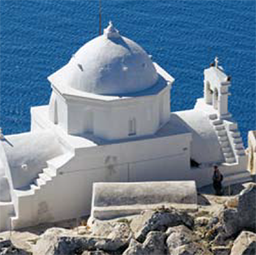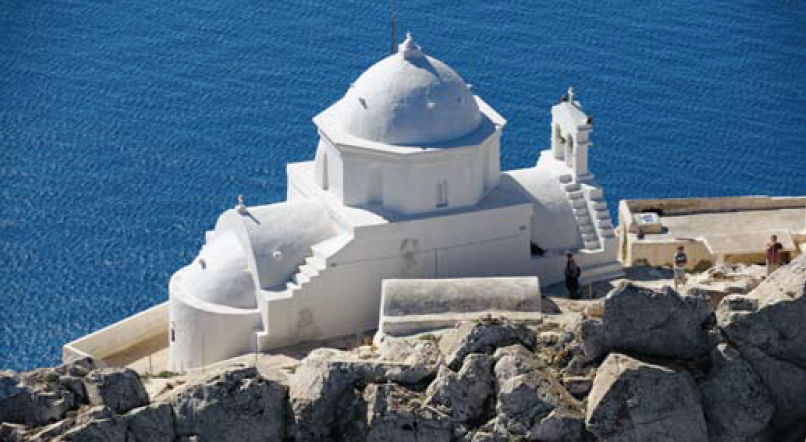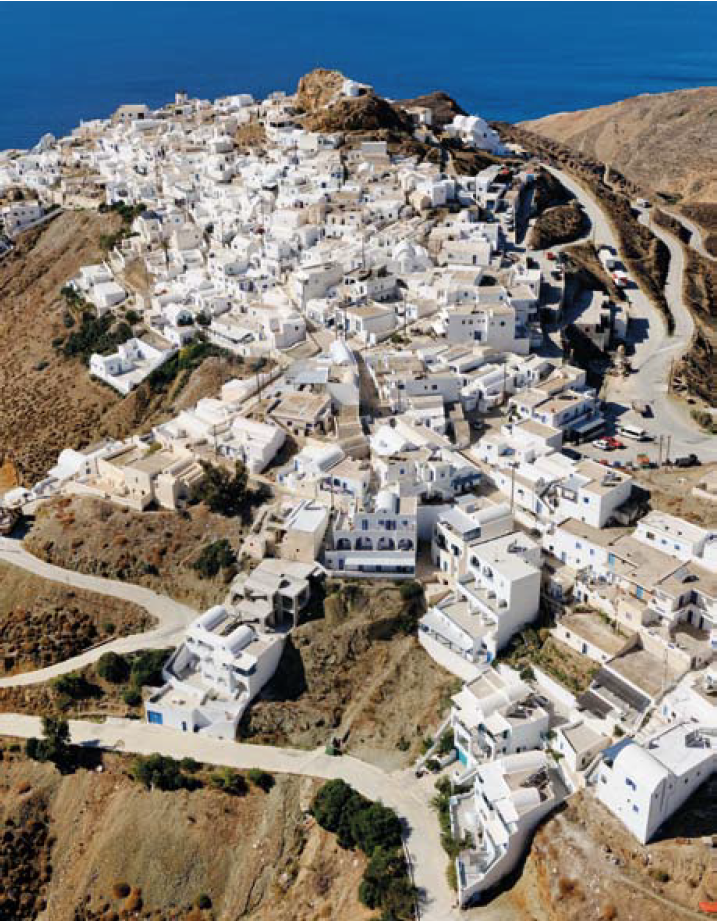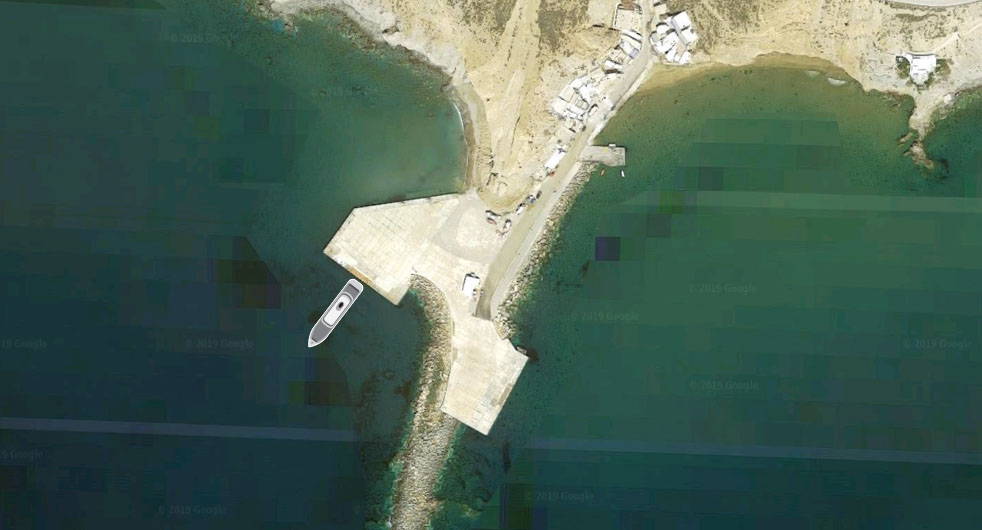
The Gibraltar of the Aegean
Home to some of the most beautiful beaches in the Cyclades. A capital that sparkles under the Aegean sun, with its picturesque white houses, lush gardens and clean alleyways with their whitewashed steps. A barren, Aegean landscape that enchants every visitor with its wild beauty. And the sunset, which is equal to that of its cosmopolitan neighbor, Santorini, if not superior.
Anafi, the island that was the refuge of the Argonauts, according to myth, today is the retreat of all those who prefer the authentic, simple hospitality and the tranquility of the Cyclades. The greatest part of the island is covered by steep mountainous bulks, providing the ideal setting for those who love trekking. An extensive network of footpaths 18 km long will take you to the unique beaches of the south, the impressive rocks of the north, the wonderful monasteries, the thermal springs and the unexplored caves. On your way, you will pass the archaeological finds that are scattered across the island. Setting out from Chora, the ideal way to get to know Anafi is on foot, along those beautiful paths.
Built above the ruins of the 13th-century Venetian fortress, the capital of Anafi, the densely populated Chora, sprawls amphitheatrically above the port of Ai Nikolas, at an altitude of 260 meters, offering astounding views to the Aegean and the Cretan sea. This is where the heart of Anafi beats. Chora will impress you with its numerous small domed houses and the narrow alleyways that traverse the settlement’s every corner and lead to the Castle, the very first settlement and the heart of the village. The white houses with their lush gardens, the beautiful small alleys of this typical Cycladic settlement, with its special architectural features, awaken indefinite memories to the visitors that are familiar with Athens.
The reason is simple: One of the quaintest neighborhoods in Plaka, right under the Acropolis of Athens, is called “Anafiotika,” and it was constructed by the exceptionally skilled builders that had come from Anafi to Athens in order to help build the capital of the newly constituted Greek state.
A prominent position in
Chora is occupied by the churches of Aghios Nikolaos, Koimisi, Aghios Charalambos, Christos tou Stavrou, Aghii Anargyri and Aghios Georgios on top of the Castle. Moreover, significant findings of ancient Anafi are exhibited at the Archaeological Collection. At the eastern part of the island you will find the imposing Rock, a limestone monolith whose summit is called Kalamos. Unreachable by sea and inaccessible by land, Kalamos is the second largest monolith in the Mediterranean after Gibraltar; it is the most impressive natural sight on the island, providing a welcome challenge for rock climbers. Indeed, the French 18th-century traveller Joseph Pitton de Tournefort called it “the most intimidating rock in the world.”
Perched on top of Kalamos is the monastery of Panaghia Kalamiotissa, built in 1715 next to the ruins of a medieval fortress. The greatest advantage of the island is undoubtedly its beaches. Whether you choose one of the sandy beaches of the south or one of the rocky coasts of the north, their wild beauty, crystal waters and exotic character will compensate you. Noteworthy on the island’s south is Klisidi, a small oasis with a marvellous sandy beach.
Next stops are Katsouni, Flamourou and Mikros Roukounas, small hideaways with fine sand and transparent waters. The following beauties are also beautiful: Megalos Roukounas, Katalymatsa, and also the pebbled beach of Megas Potamos. On the northern part of Anafi you will find the rocky beaches Vryssi and Livoskopos, accessible either by boat or through the footpaths’ network.




